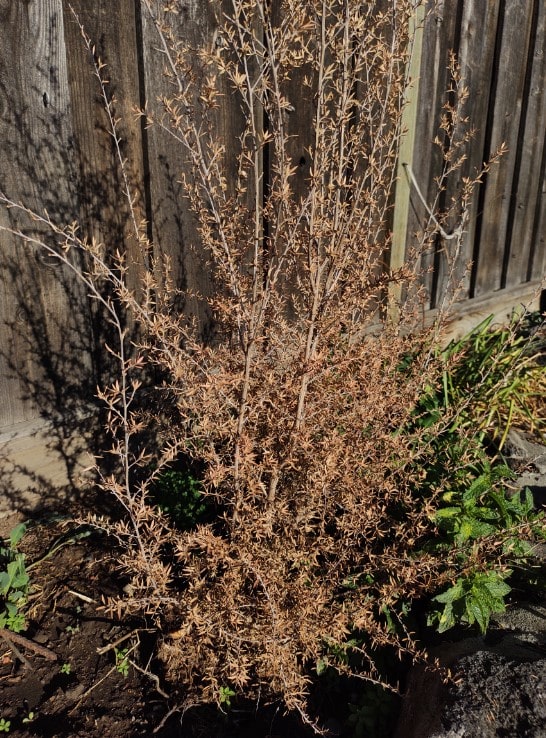So, your New Zealand Tea Tree looks like it’s dying?
In this post, I will reveal possible causes, and tell you what you can do about them.
Why is Your New Zealand Tea Tree Dying?
The most possible causes of a dying New Zealand tea tree include too much sun, overly moist conditions, or wrong pH soil levels. However, it might be also dying because of too low temperature, or age.
The New Zealand tea tree is generally a disease-free plant. Also, pests don’t attack it.
That being said, it’s possible that the tree got too much sun. Overly moist conditions also could lead to root rot. You shouldn’t exclude incorrect pH soil level that prevents the tree from properly taking up soil nutrients.
Keep on reading to identify the cause, and learn what to do.
Too Much Sun
New Zealand tea tree likes to be located in full sun. However, sometimes if the weather is too hot, the tree is exposed to strong sunlight, and it doesn’t have any shade, it might not bear that and start dying.
If the tree is getting too much sun, it turns on mechanisms that cause the dying leaves to fall off and temporarily stop photosynthesis, as these methods minimize damage by stopping a plant’s natural processes.
If you want to recognize that the New Zealand Tea Tree is dying because of too much sun, you should observe the following symptoms:
- Droopy leaves
- Brown patches
- Faded look
- Hot plant surface
- Crispy leaves
- Dried out soil

If the plant is exposed to the sun for too much time, you might not be able to recover it. However, in most cases, it’s possible to save your plant with a bit of time, care, and patience. To help your tree recover, water it more often, and try to provide partial shade.
Overly Moist Conditions
New Zealand tea tree likes moderate moisture levels. That being said, if you’re watering this tree too often, letting it sit in soggy soil, or soil drainage is poor, it might lead to root rot.
A plant that begins to wilt and collapse is probably suffering from root rot due to overly moist conditions. Other symptoms include:
- Gradual or quick decline
- Stunted or poor growth
- Small, pale leaves
- Wilted, yellowed, or browned leaves
- Branch dieback
- Thinning of the canopy
Moderately affected trees can sometimes be saved early on by pruning out the infected roots. Always be sure to disinfect any tools you work with before using them again. If a tree is significantly infected, the best way to control it from spreading the disease to healthier trees is to remove it entirely.
To prevent root rot, you typically only have to water the tree if the soil begins to dry out from a lack of rainfall.
Wrong Soil pH Level
New Zealand tea tree grows best in fertile, slightly acidic soil. Alkaline soil prevents the New Zealand Tea Tree from properly taking up soil nutrients.
If the soil pH level is incorrect, the New Zealand tea tree sometimes develops a condition in which the leaves develop a light yellow color with darker skeletal veins. This condition is called chlorosis.
If the soil is too alkaline, amend the soil to lower its pH. To lower the pH soil level, you can buy aluminum sulfur here on Amazon. Blend this product into the soil, and water thoroughly after application.
Other Possible Causes
Here are less common, but also possible causes of the bad condition of your New Zealand tea tree.
Too Low Temperature
New Zealand tea tree is suitable for 9-10 USDA hardiness zones. It tolerates temperatures as low as 40 °F (4 °C). If your area experienced lower temperatures, your tree will appear wilted. Then the wilted growth will turn brown or black and eventually become crispy. This means these affected parts of the plant have died.
Underwatering
Established New Zealand tea tree plants have some drought tolerance. However, if there is no rainfall, and you don’t water the tree from time to time, it will show signs like drooping leaves, wilting, and dry soil. To fix that, water the tree regularly, and don’t let the soil dry out for too long.
Age
New Zealand tea trees live 20-30 years. If your tree is that old, and it’s dying, you can be pretty sure that it’s too old.

